Nail psoriasis is one of several diseases, mainly affecting the skin. Like other forms of pathology, this form has a chronic, non-infectious recurrence process.
With this shape, the skin around the disc is also affected. Timely and improper treatment can cause complications such as severe deformation and complete loss of the nails and feet.
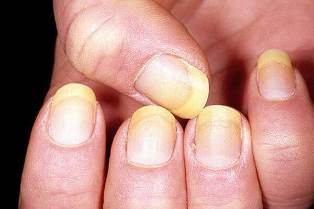
Treating nail psoriasis is like treating other diseases, but it has its own characteristics. In the article, we will look at the symptoms, causes, and treatment of nail psoriasis in the hands and feet.
Nail damage in psoriasis can occur under the influence of a variety of reasons. Often this form is found on the basis of a pathological form such as psoriatic arthritis.
In medical practice, this type is known as nail psoriasis or nail psoriasis. It is quite rare, but it often progresses with complications and many undesirable symptoms.
The following provoking factors can be the main cause of the pathology:
- frequently stressful and emotional;
- Incorrect metabolism of the body;
- chronic infectious disease;
- has poor circulation;
- damage the nails and exposure to certain chemicals; genetic predisposition
- .
Important! In some patients, nail psoriasis occurs on a foundation damaged by a bacterial infection. It is very difficult to diagnose the disease in such cases, an experienced specialist should identify the disease.
Types
Psoriasis under the nail can develop in patients of many different age groups, but in most cases, the disease occurs in patients over 35-40 years old. There are several forms of the disease. These include:
Thimble Syndrome
This species is characterized by an indented, plaque lesion. Most often they are localized to a certain area of the nail, but there are often cases where grooves extend over the entire nail. Externally, the sheet resembles a tube, which is why this type is often referred to as a "thimble".
Anesthetic
This form has symptoms such as lumpy, discolored fingernails. This occurs due to lack of healthy blood microcirculation. During the development of the disease, the plaque deforms and disappears. Only a small portion of the plate remains at the base.
Onset of hemorrhage
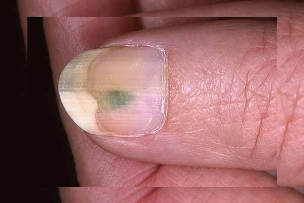
Implies the formation of red or pink spots under the fingernail. These symptoms occur in the early stages of the pathology. Furthermore, signs such as under-disc bruising may occur. There is also the compaction of the nail, its subclass.
Psoriasis or nail fungus how to distinguish?
Usually, the patient is interested in how to distinguish nail fungus from psoriasis. This issue is quite complicated and requires the consultation of a specialist. Laboratory tests are also needed. Methods such as skin sample biopsy, as well as histological studies, help eliminate fungus.
Differential diagnostics can be used to rule out diseases that also affect nails. These include the following diseases:
- planus lichen;
- different types of dermatology;
- eczema.
The main sign of psoriasis is also no abnormality in blood composition. An increase in the level of leukocytes, as well as the erythrocyte sedimentation reaction, in most cases indicates the presence of infectious pathological forms.
Important! The difference between nail fungus and nail psoriasis can be detected only with the help of laboratory tests. On the surface, the pathologies may be nearly identical.
Main symptoms of the disease
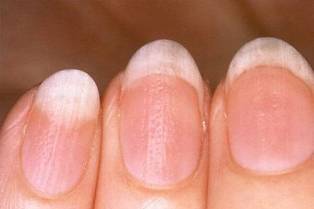
Nail psoriasis is like toenail psoriasis, which has many very unpleasant symptoms. Below, you can see photos that show what psoriasis looks like on feet and nails. Therefore, let us consider the manifestations of the disease, depending on its form.
Psoriasis hands has the following symptoms:
- appear grooves, indentations in the form of dots;
- the crust of the disc;
- outside, the plate bends and takes the shape of a hook;
- will hurt when you click.
Anesthetic:
- changes the color of the disc;
- deformed nail, violation of its integrity;
- separates the disc from the body of the finger.
Hemorrhage:
- red, brown, and blue-purple spots under the fingernail;
- deform the shape of the sheet, its crust;
- capillary damage;
- may drain pus when pressed.
Symptoms may vary slightly depending on the severity of the disease and the individual patient.
How to treat nail psoriasis
Question about how to cure nail psoriasis is quite interested today? In modern medicine, there are many ways to treat a disease. The main ones include:
- uses external products.
- Take medication by mouth.
- Use of phototherapy and other physical treatments.
- The use of traditional medicine.
Next we propose to look at each method in more detail.
Treating nail psoriasis with creams and ointments

Psoriasis of the nails and early medical treatment involves the use of topical agents.
Ointments can be hormonal or non-hormonal. The first ones are used for severe forms of the disease, in cases where non-hormonal drugs are ineffective.
Ointments for psoriasis of the nails and feet may also be non-hormonal. These are medications that include zinc, salicylic acid, and so on. v.
Non-hormonal drugs have few side effects, are not addictive, but the effects of the drug take a long time to wait. Hormonal drugs, while acting quickly, can cause a lot of complications.
Using oral drugs
Therapy must be comprehensive. The following remedies can also be used to remove symptoms and restore nails:
- Sedative.
- Immune conditioning. Medicines help enhance one's natural defenses.
- Antiallergic drug.
Physiotherapy
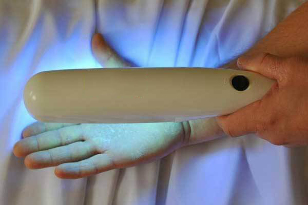
Recently, the use of physiotherapy has proven to be very good. UV therapy, as well as using methods such as cryotherapy, azone therapy, and excimer laser therapy, give excellent results. The following types of physical treatment are most commonly used in medical practice:
- UV radiation;
- PUVA therapy;
- X-ray therapy;
- uses ultrasound;
- laser treatment.
Important! The length of sessions and their number should be determined by an experienced professional. Buying medicine yourself using these methods is strictly forbidden because it often causes many side effects.
The Role of Traditional Medicine
Traditional treatment for nail psoriasis has long been used as a formal therapy. So how to treat nail psoriasis at home how we learn together below. There are many recipes to help cope with the symptoms of a disease. The most popular drugs include:
Water color royal tree
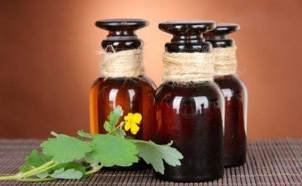
500 ml of water will need 2 tablespoons. l. herbs. Bring to a boil over low heat, cook for 30-40 minutes. Water used for bathing, dissolved with water in a ratio of 1: 2 and soaked in the hooves for 20-25 minutes.
Treating nail psoriasis with natural oil
Sea buckthorn oil gets rid of inflammation very well. It softens affected areas, replenishes useful vitamins and minerals for the nail. To do this, use a cotton pad, oil is applied to the plates and let sit for 30-40 minutes. The procedure is repeated 2-3 times a day.
Attention! If you decide to treat nail psoriasis on your own, consult your doctor beforehand, buying your own medicine can be harmful to your health!
Using a bow
The fresh onion is passed through the meat grinder, the resulting saliva is applied to the affected nails. I covered it with a gauze bandage and let it sit for 30 minutes. The treatment process lasts until healthy nails regrow. Nail psoriasis is considered a serious chronic disease. Timely diagnosis and initiation of necessary treatment is very important. This will keep your feet and hands healthy and avoid many unpleasant complications.























